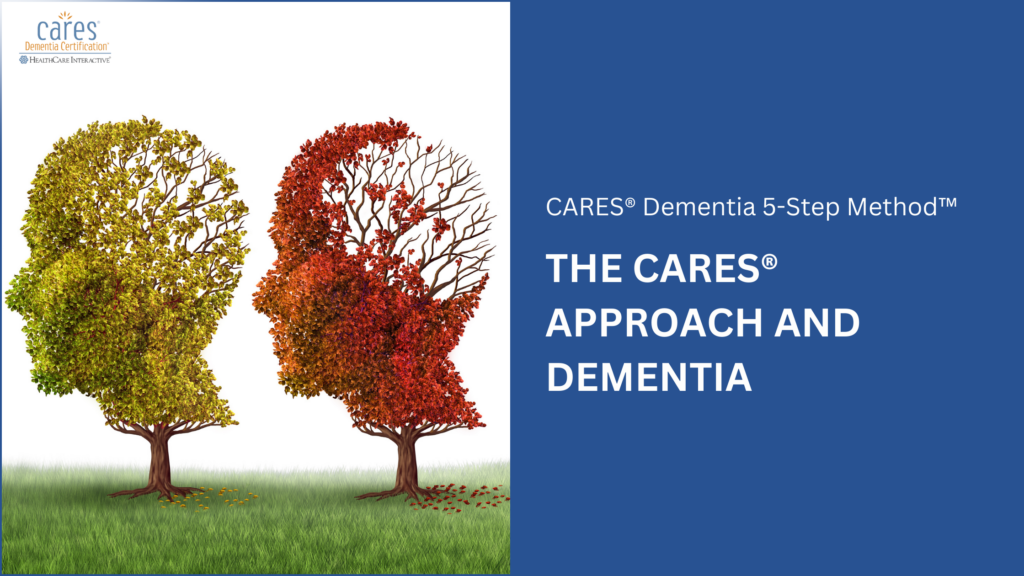The CARES approach by Healthcare Interactive is a structured method for person-centered dementia care. It stands for Connect, Assess, Respond, Evaluate, and Share, forming the foundation of HCI’s caregiving techniques. Connection isn’t just the first step—it’s something caregivers should maintain throughout every interaction. Even just slowing down and truly connecting using the CARES approach can make a meaningful difference in how you care for someone with dementia.
How CARES Works in Practice
• Connect with the Person
A simple smile, greeting, and using their preferred name can make all the difference. Always introduce yourself, stay calm, and avoid rushing.
Example: “Good afternoon, Martha. I’m John.” (Smile, be patient, and take your time.)
• Assess Behavior
Pay attention to both verbal and nonverbal cues. Ask how they’re feeling and reference something meaningful to them.
Example: “How are you today? How is your shoulder feeling?”
• Respond Appropriately
Explain what you’re doing, involve them in the process, and engage in conversation about things they care about. This is key to effective dementia interactions that build trust.
Example: “I’m going to help you put on your sweater. Let’s start with your sore shoulder so it slides on easily… Martha, did you have a favorite sweater when you were young?”
• Evaluate What Works
Make sure they’re comfortable, offer additional support if needed, and close the interaction in a warm way.
Example: “Martha, does your sweater feel okay? Can I get you a pillow for your back? I’ll check in again soon. Take care!”
• Share with Others
Pass along what you’ve learned to improve dementia care in future interactions. Small details can make a big difference.
Example: Leaving a note: “Ask Martha about her green and white high school sweater.” Or telling a colleague: “You should see how she lights up when she talks about it!”
The CARES approach is at the heart of HCI’s training programs, helping caregivers create meaningful, effective dementia interactions and compassionate care experiences. For more resources, visit HCI’s website.
Would you like to earn your certification in CARES® Dementia 5-Step Method?
Start now and gain access to Module 1 for free at www.hcinteractive.com/5StepDemo.
Don’t miss out—this limited-time offer is available now!

